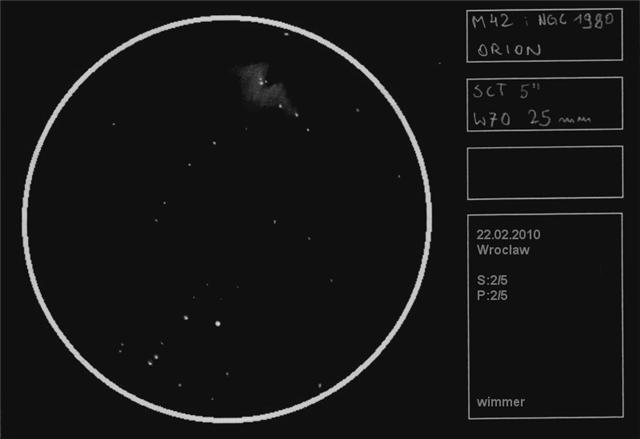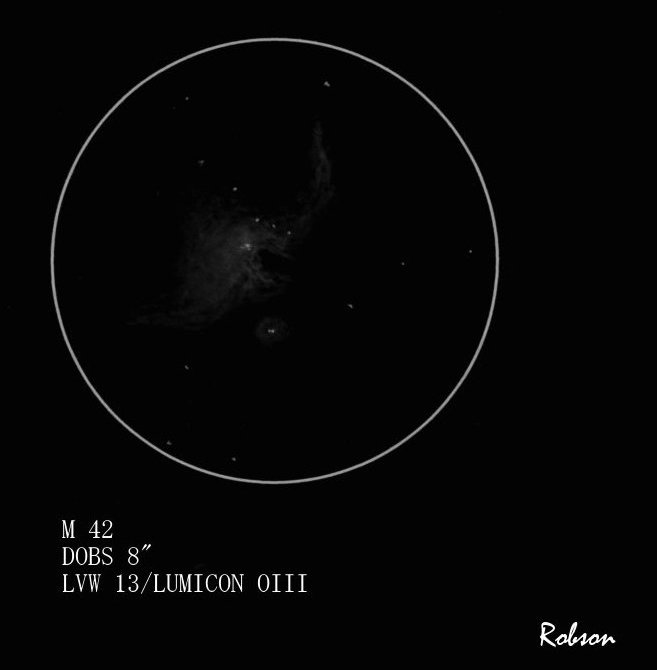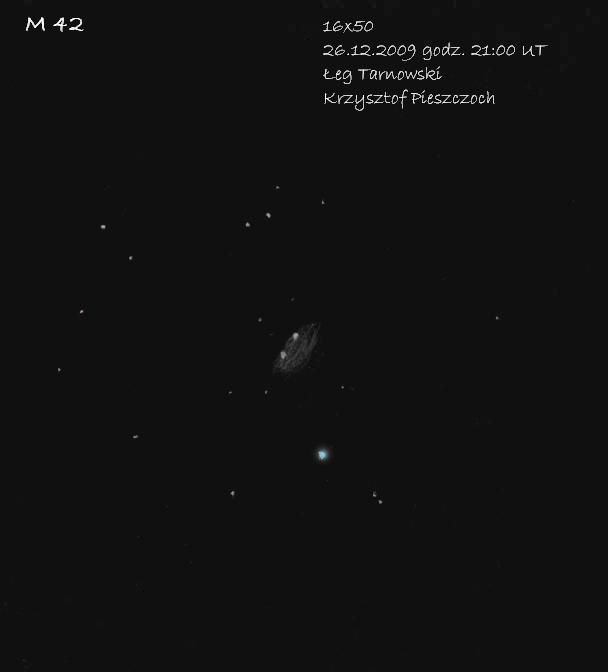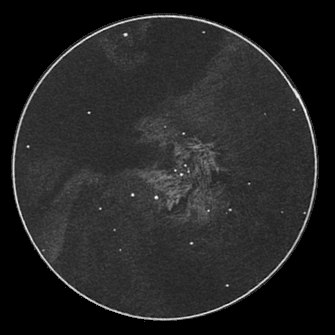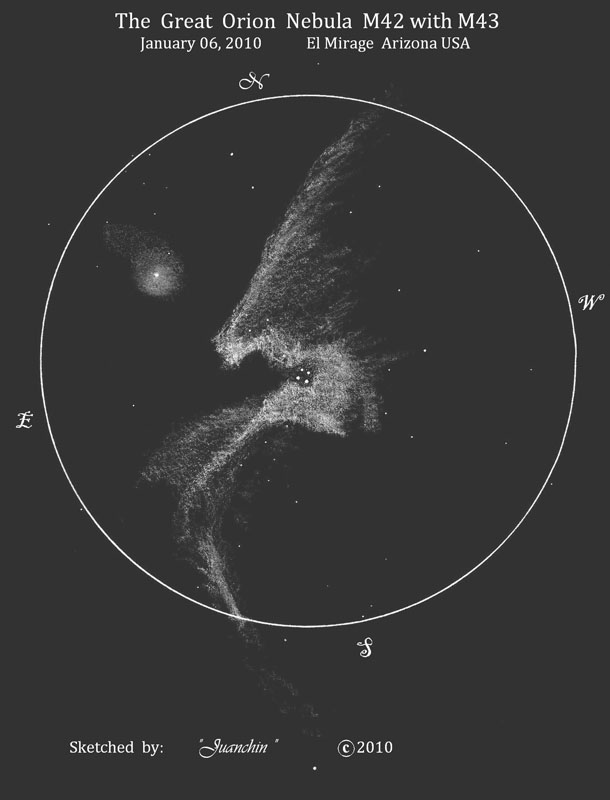
Messier 42 and 43
Sketch and Details by Juan Perez (Juanchin)
Object : Nebulae M42 and M43
Date : January 06, 2010
Time : 1230 LST / 0730 UT
Location : El Mirage Arizona USA
Instrument : CPC 1100 / 25mm Plossl / Orion Skyglow filter
Magnitude : M42/ 4 M43/ 9
Weather : In the chilly mid 40’s almost no winds and clear skies !
Sketching this stellar nursery was no easy task ! I salute all you brave people who have done a great job rendering this difficult deep sky object. I for one, almost gave up not knowing where to start. This seagull, dragon, bat, mustache, etc… has so many highlighted features. There is of course the biggest detail when peering through the scope- the Trapezium. I started with this tiny cluster of four prominent stars. As the scope settled from me not touching it, I soon was able to discern the two other less noticeable stars of the six visible. The Trapezium is largely responsible for the illumination of the reflective portion of this nebula so, its no coincidence that the surrounding cloud of dust is also the brightest. There are two curving arms of nebulosity that stretch vaguely to the north and the other to the south. Under these arms and with averted vision, you will notice intricate filaments of dust that disperse into obscurity. Not far from M42 slewing the scope in a northeast direction, a 9th magnitude star is covered or engulfed with a wispy nebulous aura. I believe, I saw some subtle dark lanes on the southern portion of this nebula which had an elongated and attenuated or diffuse tail pointing away from M42. Anyway, I had spent almost 4 hours trying to see with the corners of my eyes and it was time to give it a break. So here is my final sketch for now, maybe sometime later I’ll include one of the Trapezium by itself. Enjoy !!!



